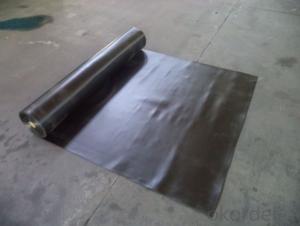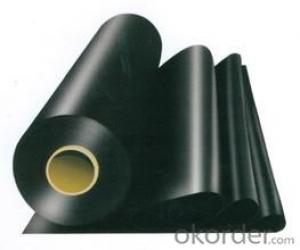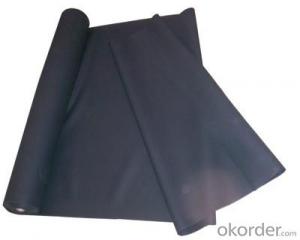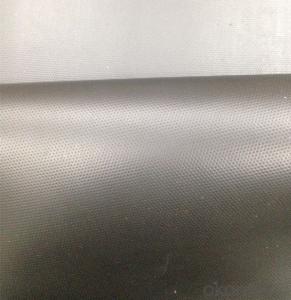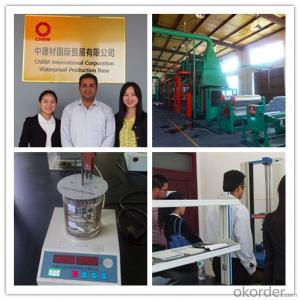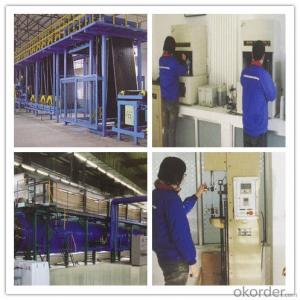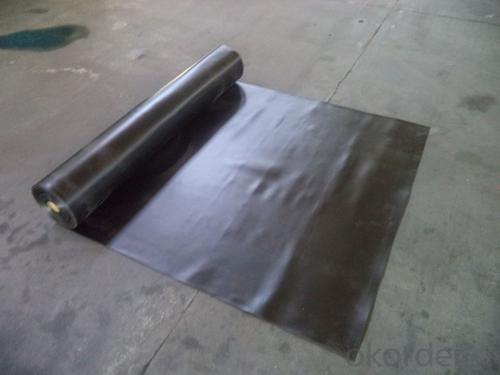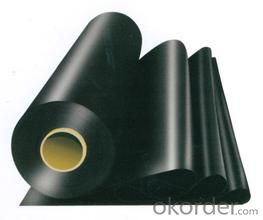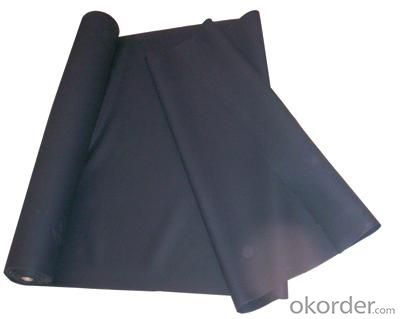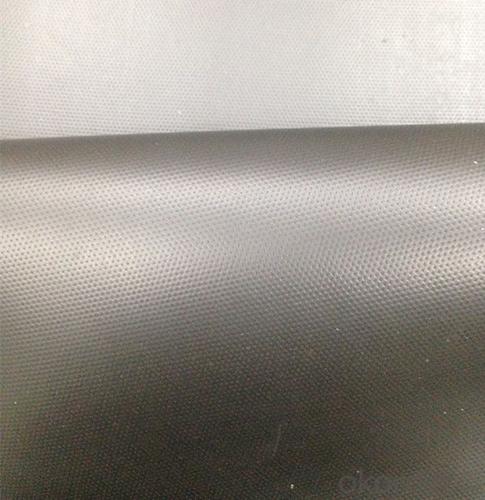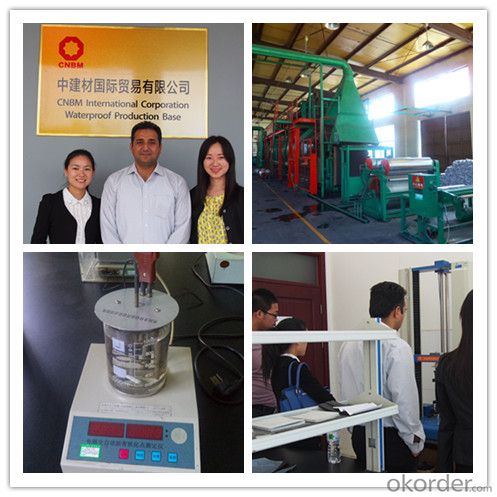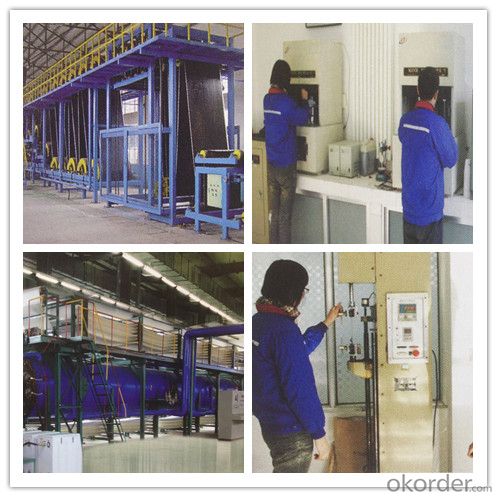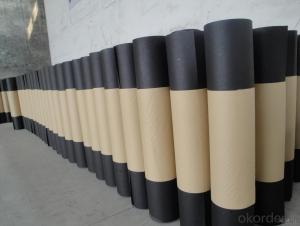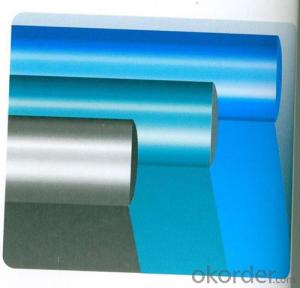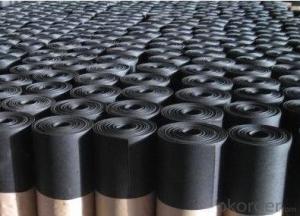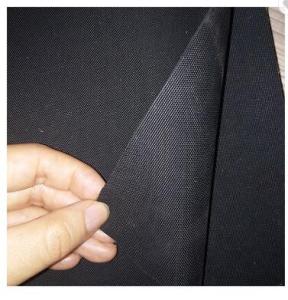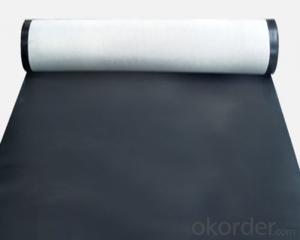EPDM Rubber Waterproof Sheet for Single Layer Roof System
- Loading Port:
- Qingdao
- Payment Terms:
- TT or LC
- Min Order Qty:
- 3300 m²
- Supply Capability:
- 220000 m²/month
OKorder Service Pledge
OKorder Financial Service
You Might Also Like
EPDM Rubber Waterproof Membrane for Single Layer Roof System
Instruction for EPDM Single Layer Roof System:
EPDM waterproof membrane is made from ternary ethylene-propylene rubber,which is designed for waterproofing of exposed and non-exposed applications. EPDM waterproof membrane is of high elasticity among high polymer waterproof materials and becomes a world-popular waterproofing material.
CNBM own the wold-advanced equipment of cold feeding extrusion and continuous vulcanization technology. With the best performance among high polymer waterproof materials, EPDM is of exceptional elasticity and will not split or cracked under normal building movement.
Features of EPDM Single Layer Roof System:
-Excellent weather-ability, durability and size stability
-Good adaptability to high and low temperature, UV resistant and anti-corrosion
-High tensile strength and good elongation, accommodating to structure movement
-Easy installation, solid joint, and mo environmental pollution
-Good rooting penetration resistance
-Service life up to 50 years
Applications of EPDM Single Layer Roof System:
-Roof, basement, tunnel, pond liner, dam
-Industrial and civil building waterproofing
-Geosynthetic liner for fish ponds, swimming pools, channels, irrigation system
-Especially suitable for projects with high requirement in durability, anti-corrosion and deformation
Specifications of EPDM Single Layer Roof System:
-Width of roll: 1.2m, 2m, 4m
-Length of roll: 20m, 30m or customized
-Thickness of membrane: 1.2mm, 1.5mm, 2mm
-Type: vulcanized EPDM or welding EPDM
-Application: roof, basement, pond, lake, swimming pool, steel structure roofing, underground, tunnel, etc
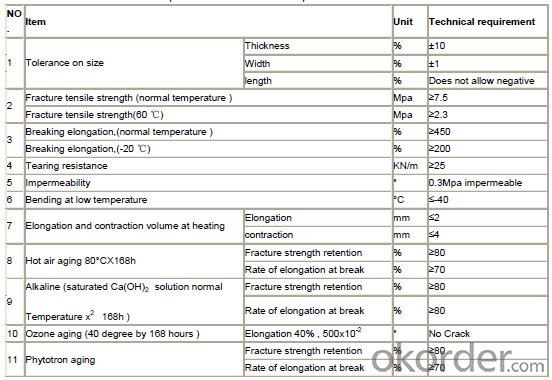
FAQ:
1. Is your EPDM waterproof membrane the real rubber?
Yes, our EPDM membrane is made from top quality rubber, which is imported from America. We support samples for testing, or testing in our factory.
2. How's your products quality?
Our EPDM is with the top quality at home and abroad. Our quality is much higher than Chinese standard. Our product is widely used in Chinese Central government projects. And it's also accpted by customers all over the world, such as EU, USA, Astrulia, etc.
3. What's the service life of your EPDM membrane?
The service life of our EPDM membrane is more than 50 years.
4.What's your MOQ?
Our MOQ is 3000M2.
5. What's your product ability of EPDM membrane?
We own the largest EPDM production line in China. Our product ability of EPDM membrane reaches 2 million square meter per year.
Photos of EPDM Single Layer Roof System:
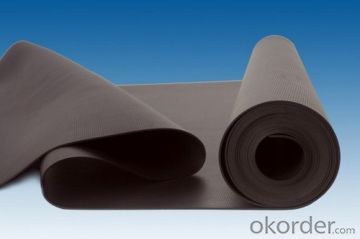
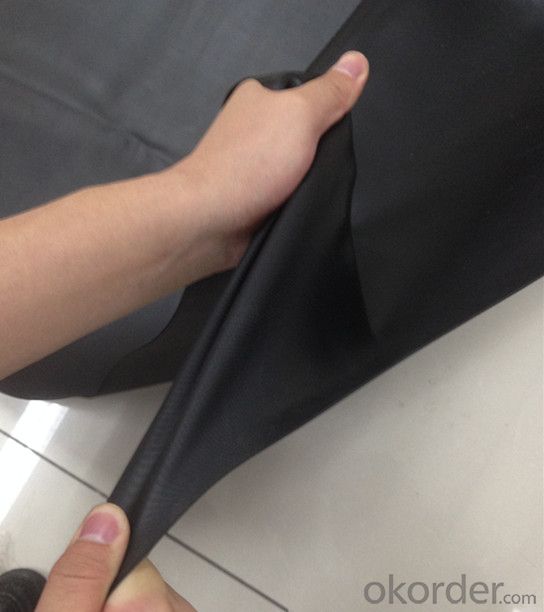
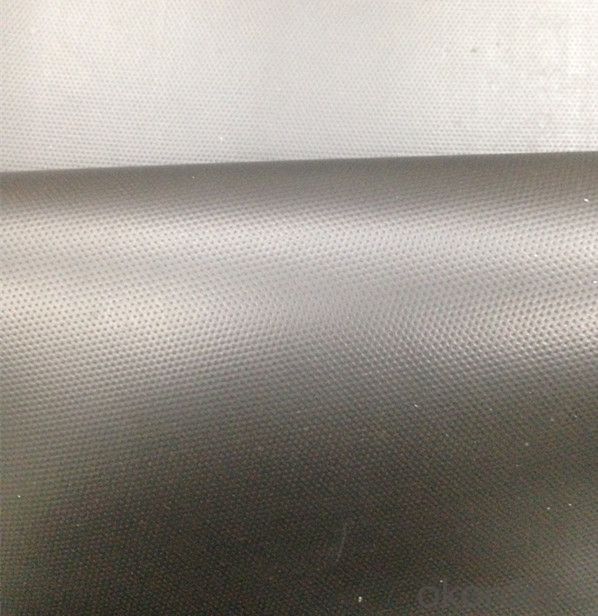
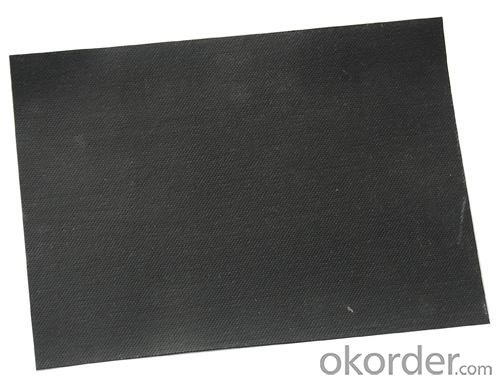
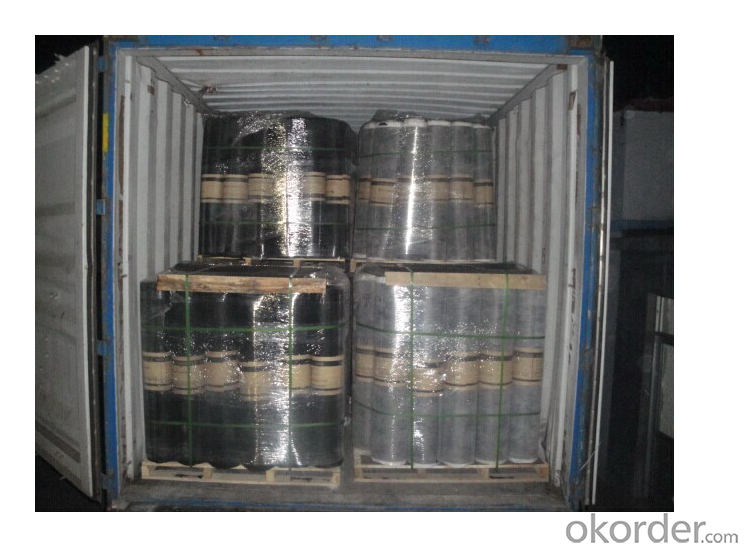
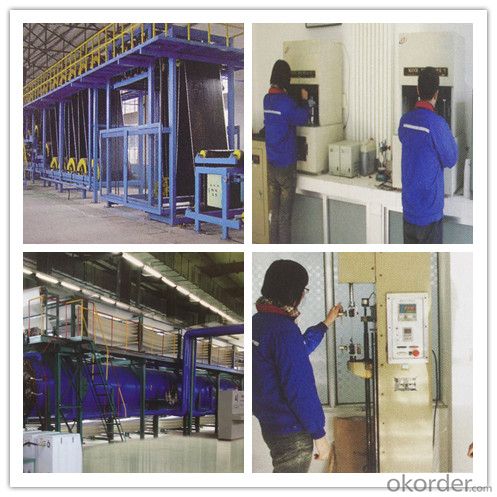
- Q: Can a waterproofing membrane be applied to both interior and exterior surfaces?
- Yes, a waterproofing membrane can be applied to both interior and exterior surfaces. The purpose of a waterproofing membrane is to prevent water infiltration and protect the underlying surfaces. Whether it is applied on the inside or outside, the membrane serves the same purpose of creating a barrier against moisture. Interior waterproofing membranes are commonly used in basements and crawl spaces to prevent water seepage from the ground into the interior of the building. Exterior waterproofing membranes are typically applied on the exterior walls and foundations to prevent water penetration from rain, groundwater, or other external sources. Both types of membranes are designed to be durable, flexible, and resistant to water, ensuring the longevity and structural integrity of the surfaces they are applied to.
- Q: Can a waterproofing membrane be used in residential buildings?
- Yes, a waterproofing membrane can be used in residential buildings. It is commonly used in basements, bathrooms, and other areas prone to moisture to prevent water damage and leakage.
- Q: Waterproof basement is empty shop or full shop
- Basement waterproof construction specification. Basement waterproof acceptance specification, to see their own.
- Q: Can a waterproofing membrane be used for a podium deck coating?
- A podium deck coating can indeed utilize a waterproofing membrane. The purpose of a waterproofing membrane is to establish a barrier between the structure and the external surroundings, thereby warding off water infiltration and safeguarding the underlying surface. Podium decks, commonly present in commercial buildings or outdoor areas, are prone to water harm as a result of exposure to weather conditions. By applying a waterproofing membrane to the podium deck, water penetration can be effectively averted, guaranteeing long-term protection against issues related to moisture, such as leaks, mold, and deterioration. Furthermore, certain waterproofing membranes can provide added advantages, including UV resistance, crack bridging capabilities, and aesthetic enhancements. Nevertheless, it is crucial to take into account factors such as the specific requirements of the podium deck, the type of membrane employed, and the expertise of the applicator to ensure proper installation and compatibility with the deck substrate.
- Q: Can a waterproofing membrane be used for a school?
- Yes, a waterproofing membrane can be used for a school. Waterproofing membranes are commonly used in construction to prevent water penetration and protect buildings from moisture damage. Installing a waterproofing membrane in areas such as basements, roofs, or exterior walls can help keep the school building dry and safeguard against potential water-related issues.
- Q: Does a waterproofing membrane require any curing time?
- Yes, a waterproofing membrane typically requires a curing time. The curing time allows the membrane to fully bond and form a tight seal, ensuring maximum effectiveness in preventing water penetration. The specific duration of curing time may vary depending on the type of membrane and manufacturer's instructions.
- Q: Can a waterproofing membrane be applied to concrete?
- Concrete can have a waterproofing membrane applied to it, which is a commonly used and effective method for protecting concrete structures from water damage. The membrane, usually made of flexible materials like rubber or polymer, is applied to the concrete surface to create a barrier that prevents water from entering and causing deterioration or structural harm. Various types of concrete structures, such as basements, foundations, roofs, and balconies, can benefit from the application of waterproofing membranes. To apply the membrane, the concrete surface needs to be cleaned and prepared, and a primer may be necessary. Then, the membrane can be applied using a brush, roller, or spray. It is crucial to carefully follow the manufacturer's instructions and ensure proper installation to achieve the desired level of waterproofing.
- Q: Can a waterproofing membrane be used in geotechnical applications?
- Indeed, geotechnical applications can make effective use of waterproofing membranes. These membranes are commonly employed to safeguard structures against water infiltration and are applied to various surfaces such as roofs, basements, and foundations. In geotechnical applications, these membranes serve the purpose of preventing water from seeping into the soil, thus averting erosion and stabilizing slopes. They can be positioned either horizontally or vertically to establish a barrier that hinders water penetration, which proves particularly advantageous in retaining walls, embankments, and dams. Furthermore, waterproofing membranes can be used to regulate water flow and enhance drainage in geotechnical projects. All in all, incorporating a waterproofing membrane into geotechnical applications can significantly enhance the longevity and performance of structures while effectively safeguarding them against water-related issues.
- Q: Are waterproofing membranes resistant to hydrocarbons?
- Waterproofing membranes are generally resistant to hydrocarbons, meaning they can withstand exposure to substances like oil, gasoline, and diesel. These membranes are designed to block water penetration and are typically made from materials such as bitumen, PVC, TPO, or EPDM. These materials have a natural resistance to hydrocarbons, allowing the membrane to remain effective even when exposed to such substances. However, it's important to consider that the level of resistance may vary depending on the material and its quality. Thus, it is advisable to refer to the manufacturer's specifications and guidelines to ensure the appropriate selection and installation of a hydrocarbon-resistant waterproofing membrane.
- Q: Can a waterproofing membrane be used on terrazzo surfaces?
- Yes, a waterproofing membrane can be used on terrazzo surfaces. Terrazzo is a durable and versatile flooring material made from a combination of marble, granite, quartz, or glass chips embedded in a cementitious or epoxy matrix. While terrazzo is generally resistant to water, it is not completely waterproof and can absorb moisture if left untreated. Applying a waterproofing membrane on terrazzo surfaces can help protect it from water damage, staining, and discoloration. The membrane acts as a barrier, preventing water and other liquids from seeping into the terrazzo, thus enhancing its longevity and maintaining its aesthetic appearance. It is important to ensure that the waterproofing membrane is compatible with the terrazzo material and is applied according to the manufacturer's instructions for optimal effectiveness.
Send your message to us
EPDM Rubber Waterproof Sheet for Single Layer Roof System
- Loading Port:
- Qingdao
- Payment Terms:
- TT or LC
- Min Order Qty:
- 3300 m²
- Supply Capability:
- 220000 m²/month
OKorder Service Pledge
OKorder Financial Service
Similar products
Hot products
Hot Searches
Related keywords
